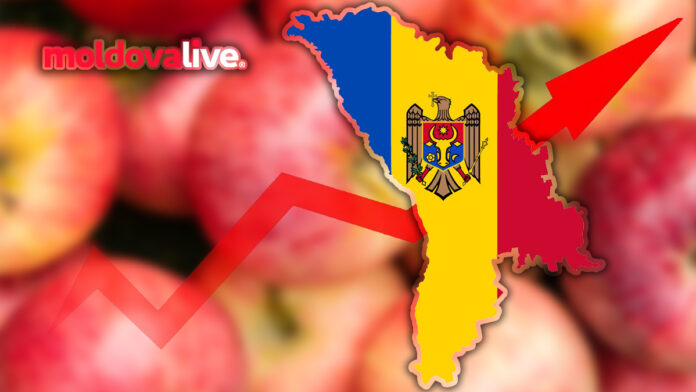In 2024, fruit exports from the Republic of Moldova reached a historic high of $282.4 million, surpassing all previous records. According to economic expert Veaceslav Ionita, higher prices and a more diversified export structure and destination markets—not larger volumes—drove the growth.
“In 2024, two major changes occurred: we no longer have a single fruit dominating exports, nor a single country dominating the market. The export structure is now balanced, as is the distribution network,” Ionita said during the show Economic Analysis.
According to BANI.MD, Moldova’s total fruit production last year—such as walnuts and berries—was only 621,000 tonnes, the lowest in the past eight years. Still, fresh, dried, frozen, or processed fruit exports generated $425.9 million, including $292.4 million from fresh fruit and vegetables and $133.5 million from fruit-based preparations.
“We exported less, but at higher prices,” Ionita added. The average price per kilogram of exported fruit in 2024 was $1.01, compared to $0.76 in 2022.
FOR THE MOST IMPORTANT NEWS, FOLLOW US ON TWITTER!
Up to 2015, walnuts accounted for 52% of all fruit exports. In 2024, their share dropped to 15%, overtaken by apples (27%), grapes (21.6%), and plums (16%). Other valuable products included dried fruit, berries, apricots, pears, cherries, and sour cherries.
The best-selling prices were for:
- Walnuts – $4.61/kg
- Dried/frozen fruits – $1.82/kg
- Berries – $1.76/kg
- Cherries – $1.35/kg
- Grapes – $1.17/kg
Plums recorded the highest price increase, with export prices rising over 45% compared to the previous year.
For the first time, Romania became the leading destination for Moldovan fruit exports, accounting for 23.5%, followed by Russia (22.9%), Germany (8.8%), Poland (8.1%), Belarus (5.4%), and others, including the Netherlands, France, Ukraine, and Switzerland. In total, Moldova exported fruit to over 60 countries.
“This is the effect of the 2014 embargo and the war in Ukraine. These crises forced Moldova to diversify both its fruit varieties and its markets. And the results speak for themselves,” the economist said.
Ionita expects exports to drop in early 2025 due to the poor 2024 harvest, but strong prices, modern orchards, better packaging, and top markets keep the fruit sector promising.
“Moldova has the potential to double its fruit exports if support policies remain coherent and focused on modernization and diversification,” Ionita concluded.



